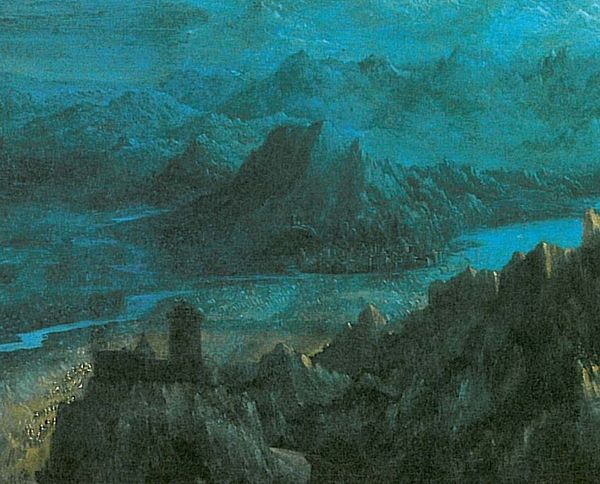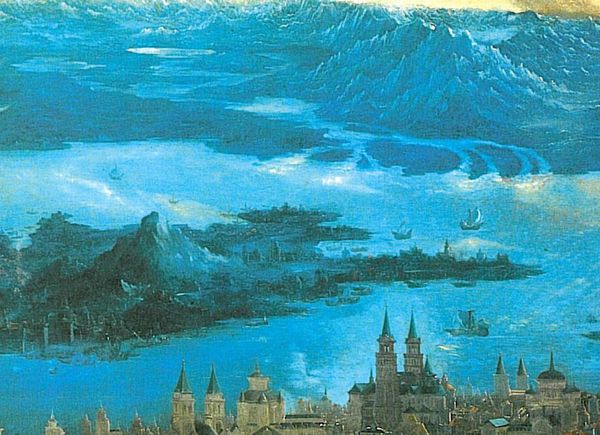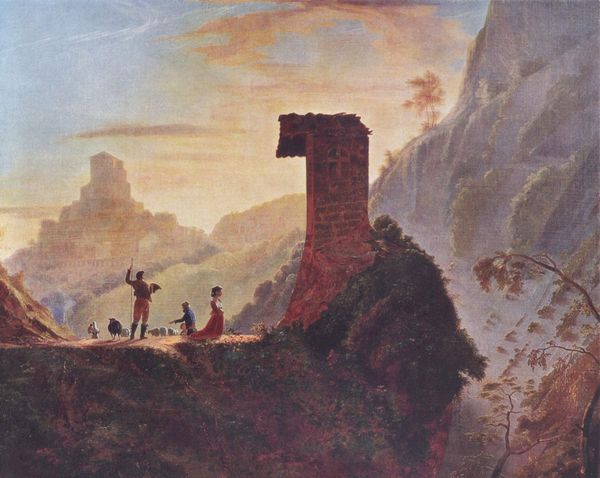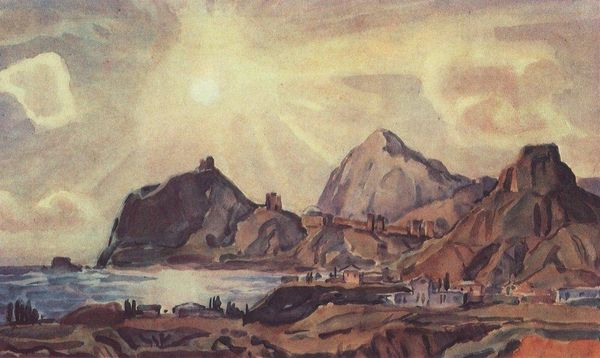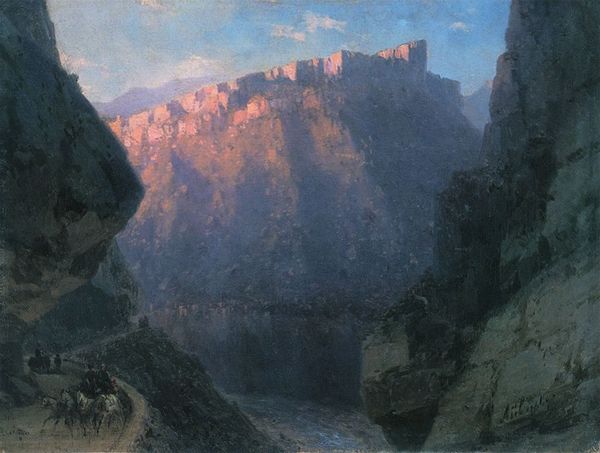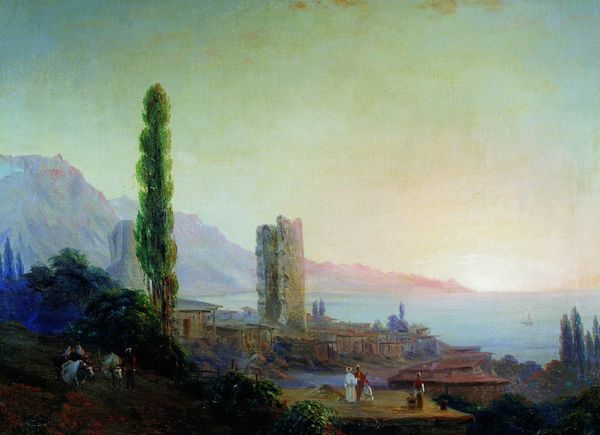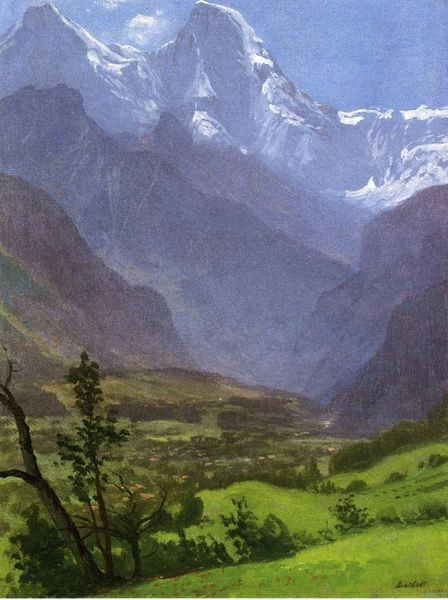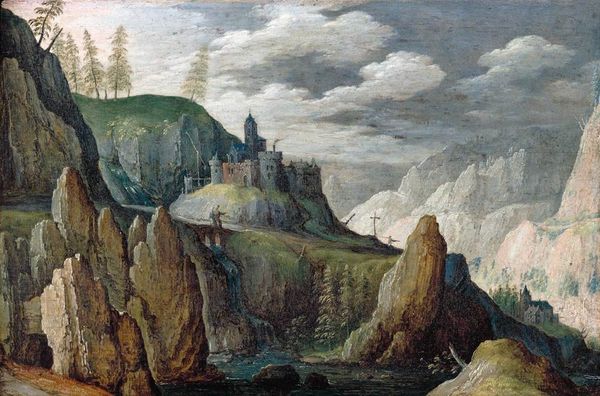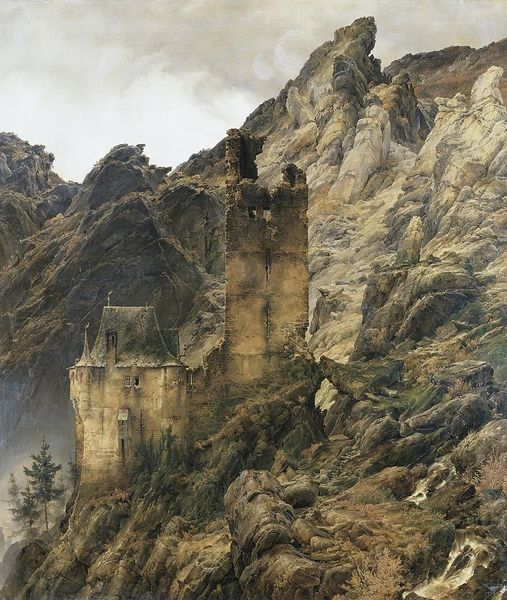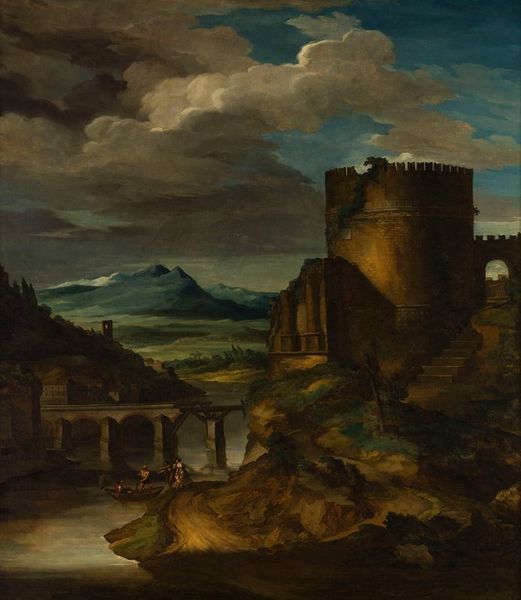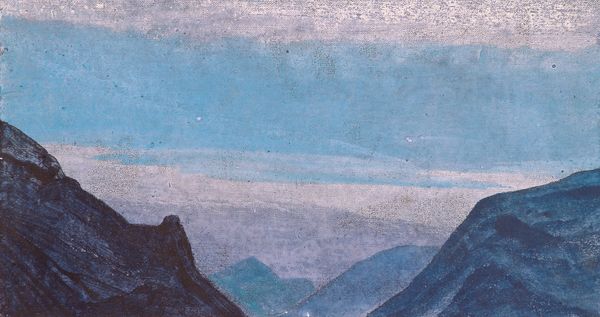
Copyright: Public domain
Editor: Here we have a fragment of Albrecht Altdorfer's "The Battle of Issus" from 1529, created with oil paint. Even in this section, it's hard to miss the dramatic, almost overwhelming landscape. What statements can we draw about society and power by observing its landscapes? Curator: That's an excellent observation. It's essential to recognize that these battle scenes, while depicting historical events, were profoundly shaped by the political and social climate in which Altdorfer lived. Look closely: do you see the ways in which nature dwarfs the human figures and cityscapes in the distance? Editor: Absolutely! There’s a real sense of the insignificance of human conflict when contrasted with the vastness of nature. Is this a statement, an invitation for us to reflect on history’s grand scheme? Curator: Precisely! Remember, the Holy Roman Empire was facing threats from the Ottoman Empire during this time. Art served as propaganda. Altdorfer emphasizes the power of the divine or natural order that ultimately decides the fate of empires and kings. Think about the public role of art at the time. Is he encouraging a defiance of the Empire or warning against human vanities? Editor: I hadn't considered that direct connection to the socio-political context. The landscape isn't just a backdrop; it is a vital component in understanding the artwork's purpose within its society. Curator: Exactly. Consider the institutional context. Who commissioned this work? How would the patrons view the symbolism and use this powerful image to project a message of strength and providence? Editor: I’m learning how crucial it is to place artwork like this within its historical and political frameworks. It gives a completely different dimension to our interpretation. Thanks! Curator: Indeed. It shows the interplay between artistic expression, historical narrative, and the wielding of social power. A great day's reflection, well done!
Comments
No comments
Be the first to comment and join the conversation on the ultimate creative platform.
